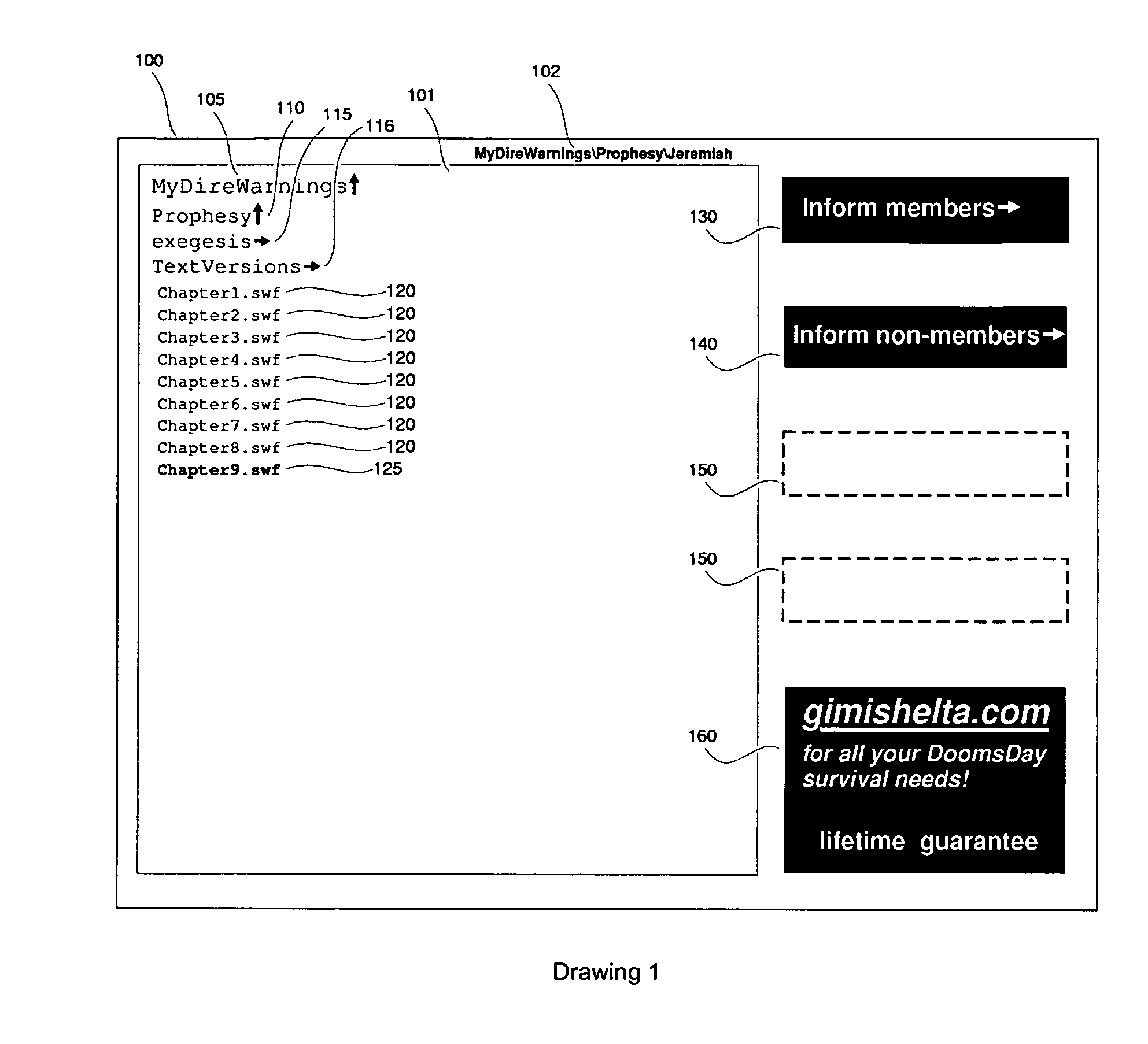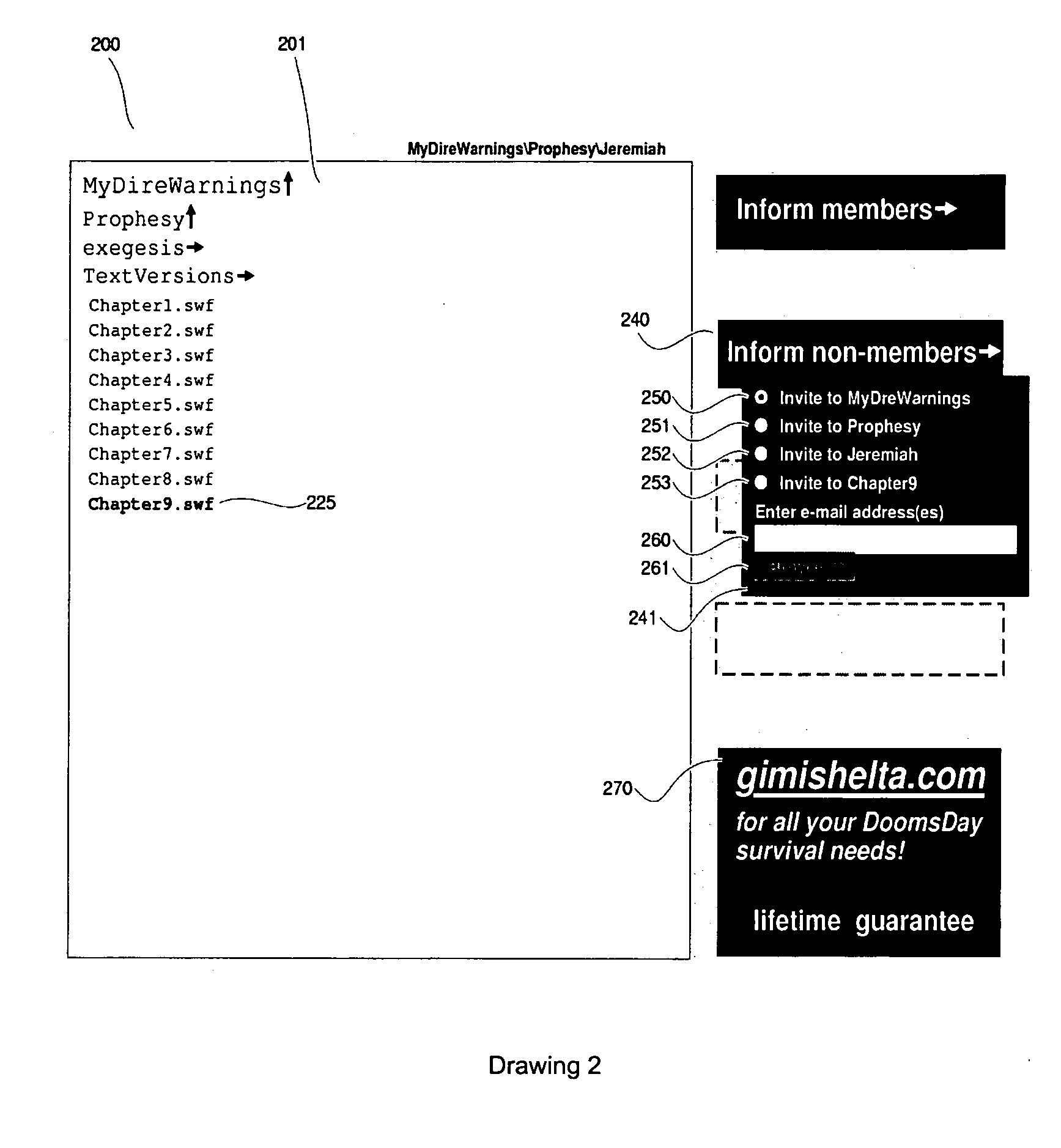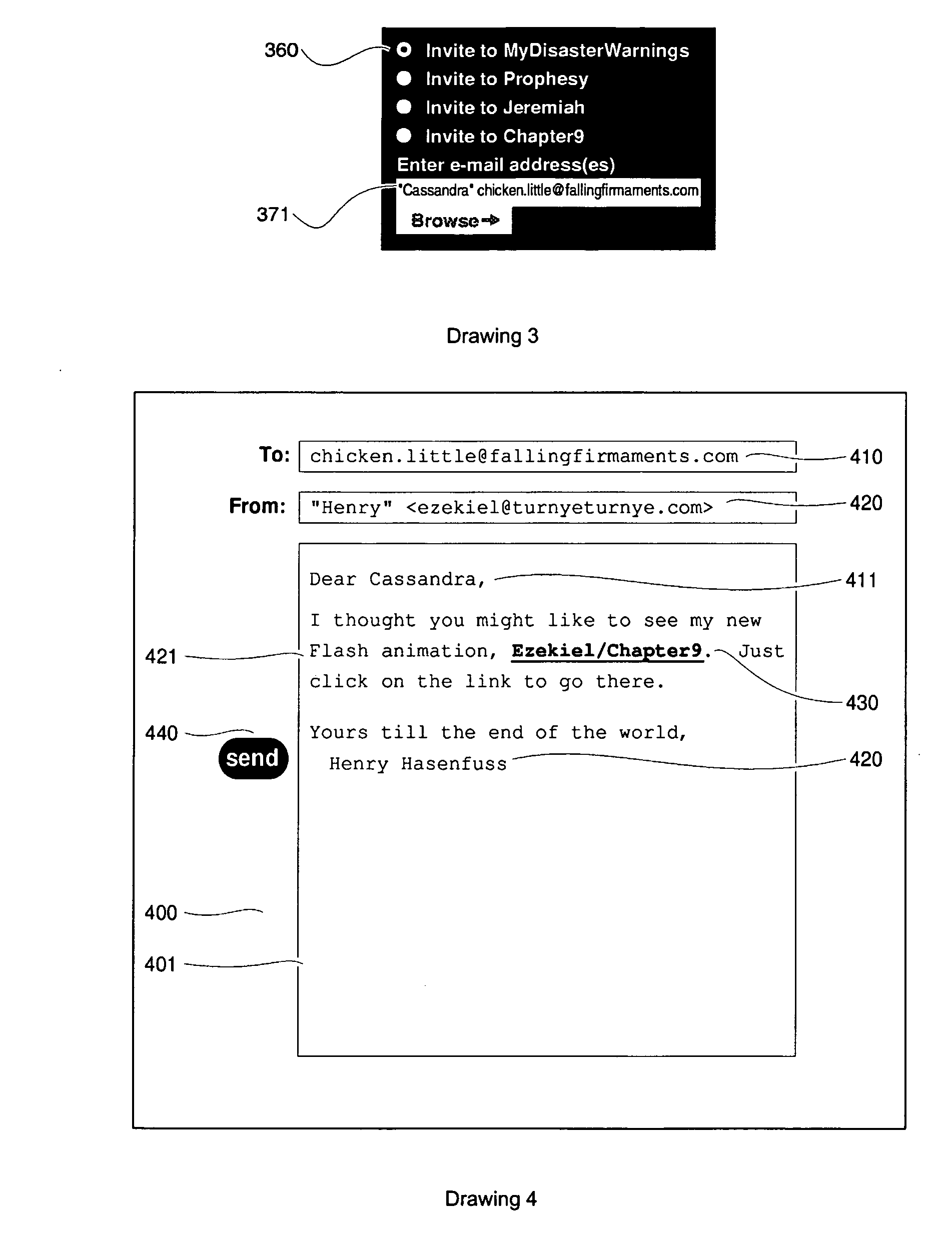Method and system for invitational recruitment to a web site
a web site and invitational recruitment technology, applied in the field of invitational recruitment to a web site, can solve the problems of user unease, significant psychological barrier, and long learning curv
- Summary
- Abstract
- Description
- Claims
- Application Information
AI Technical Summary
Benefits of technology
Problems solved by technology
Method used
Image
Examples
first embodiment
[0080]In this security facet the link 430 may be used only a limited number n of times, where the value n=1 is preferred. The invitee may be informed of this limit in a number of ways, such as the request “So that you can return securely to our site, please think of a password and enter it here” attached to the entry box 590. Optionally, if the invitee shows interest in the site by clicking a button such as those displayed in Drawing 5 but has not yet entered a password, this may be reinforced by popping up the message window 600 shown in Drawing 6, which may also have an “OK” button by which it can be caused to disappear (but may reappear if the invitee again clicks a button without entering a password). By our preference, keyboard focus moves to the box 590, as signalled by the presence of a cursor 690 which may be made conspicuous by such means as blinking. If the invitee enters a password it is not displayed letter by letter but a new small window appears, requesting it be typed...
second embodiment
[0082]In this security facet the link 430 may be used an arbitrary number of times, but only from the machine and the browser from which it is used first. The user may still be invited to provide a password, which will enable use from any machine and any browser, in which case in our preferred embodiment the server will require the password each time the account is accessed. (An example where the user might prefer this option is when responding to the initial invitation from a shared machine or a cybercafe.) One means of implementing this feature by placing a ‘cookie’ in the browser's folder for such records will be evident to one skilled in the art. Certain users have their security settings adjusted to refuse cookies, which makes this method unviable. Therefore, the first time an invitee clicks on a button such as those shown in Drawing 5 for navigation within the site, our preferred embodiment checks the possibility of placing a cookie that will remain beyond the present session....
third embodiment
[0084]this security facet of the present invention uses a sequence of new links. The link 430 may be used only once, but each time a user who has not set a password ends a session (by an overt logout mechanism, by closing all windows belonging to the site, or by inactivity for a set amount of time), the embodiment sends a new email as in Drawing 10 to the user's email address 1010, from an address 1020 at the site. By preference, it personalises 1011 the message to the particular user. The URL in the link 1030 contains a similar single-use key to that in the original invitation. Optionally, a link 1040 to a registration page is included, whereby the user can set up a password.
[0085]As these examples make clear, many ways to provide security of private access to the invitee may be included within the spirit of the present invention, avoiding the necessity that the invitee performs any of the currently standard means of establishing an identity with the web site.
Application to Multipl...
PUM
 Login to View More
Login to View More Abstract
Description
Claims
Application Information
 Login to View More
Login to View More - R&D
- Intellectual Property
- Life Sciences
- Materials
- Tech Scout
- Unparalleled Data Quality
- Higher Quality Content
- 60% Fewer Hallucinations
Browse by: Latest US Patents, China's latest patents, Technical Efficacy Thesaurus, Application Domain, Technology Topic, Popular Technical Reports.
© 2025 PatSnap. All rights reserved.Legal|Privacy policy|Modern Slavery Act Transparency Statement|Sitemap|About US| Contact US: help@patsnap.com



